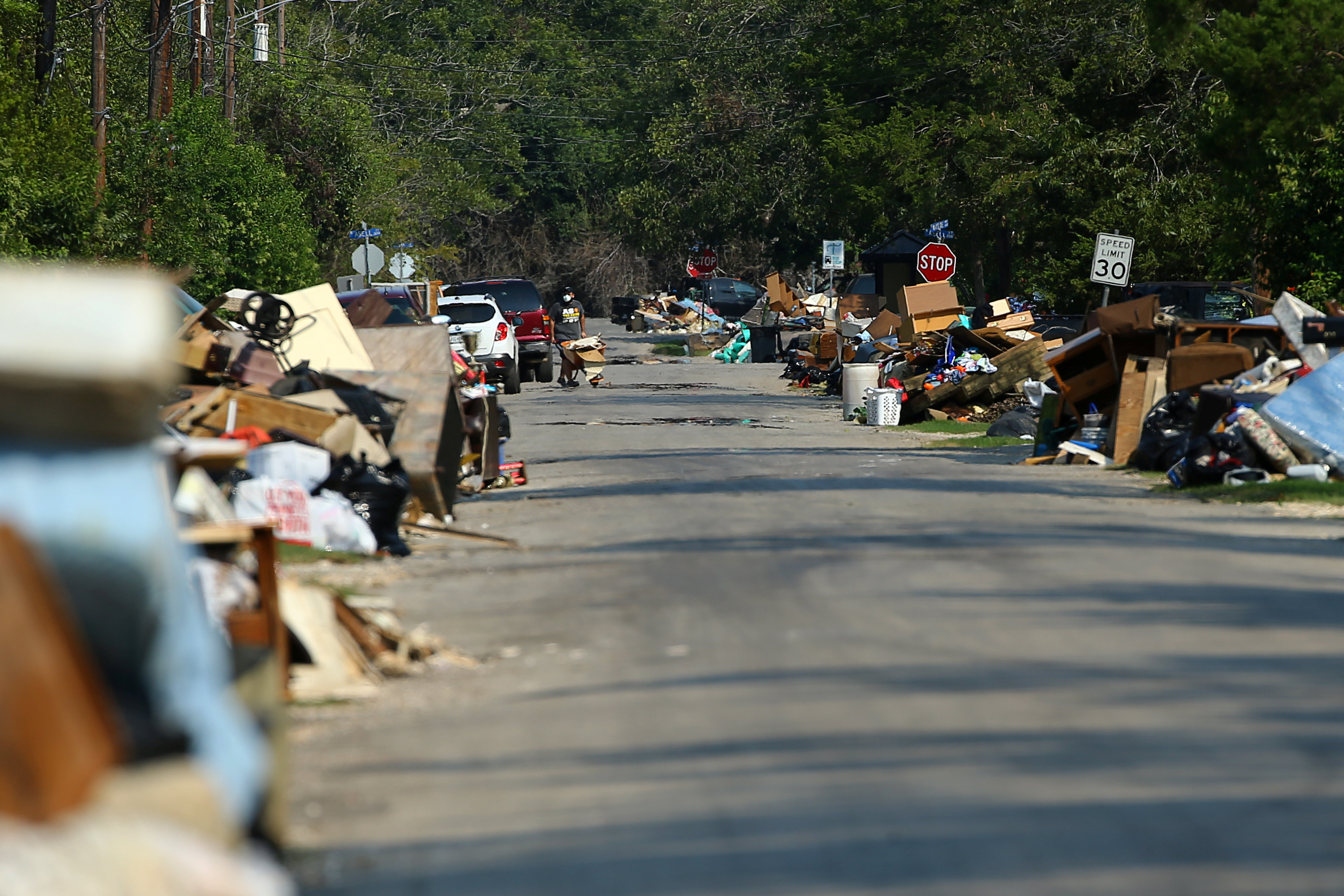
By Bryan Sims
HOUSTON (Reuters) – Owners of homes flooded during Hurricane Harvey are claiming billions of dollars in damages by federal and state water releases from storm-swollen reservoirs, using a legal tack pursued without success in Louisiana after Hurricane Katrina.
Several lawsuits filed in federal and state courts in Texas claim properties were taken for public use without compensation. The lawsuits name the U.S. Army Corps of Engineers and a state agency responsible for water releases. The potential damages could run as high as $3 billion, according to attorneys involved.
“No one expects your government is going to deliberately do something that is going to flood your home,” said Rhonda Pearce, 56. Her west Houston home was damaged by flooding from reservoir dam releases and she is considering legal action, she said.
“Homes were literally being swept away,” said Derek Potts, a Houston-based lawyer representing plaintiffs in a lawsuit filed in Harris County court against the San Jacinto River Authority (SJRA) in a Texas court. His lawsuits are seeking class action status and could involve thousands of homes and businesses.
Water released from a lake into the San Jacinto River was lawful and area flooding “was neither caused by or made worse” by those releases, the SJRA said in a statement. Similar claims from an earlier storm were dismissed in court, it said.
The Army Corps of Engineers referred questions to the U.S. Department of Justice, which declined to comment.
Potts said there are more than 1,000 homes valued at between $750,000 and $1 million, that could be covered by the lawsuit against the SJRA, putting potential damages in that case in the billions of dollars.
Similar cases last decade that argued the government improperly took property when levees failed in Louisiana after Hurricane Katrina in 2005 were unsuccessful, said Robert R. M. Verchick, an environmental law professor at Loyola College of Law in New Orleans.
“The Katrina plaintiffs tried to the do the same thing – and they lost,” Verchick said. “In some ways this is going to follow the same path.”
Christopher Johns, an attorney who has filed two lawsuits in U.S. Court of Federal Claims in Washington, D.C., said his firm has been contacted by hundreds of other homeowners. A 2012 U.S. Supreme Court decision involving flooding have opened the door to winning such claims, he said.
Megan Strickland, a plaintiff in one of the federal lawsuits, said while it is difficult to immediately quantify the damage to her home, many of her neighbors are in a similar situation.
“We don’t know if our neighborhood will be coming back again,” Strickland said.
(Reporting by Bryan Sims and David Gaffen; Writing by Gary McWilliams; Editing by Lisa Shumaker)









